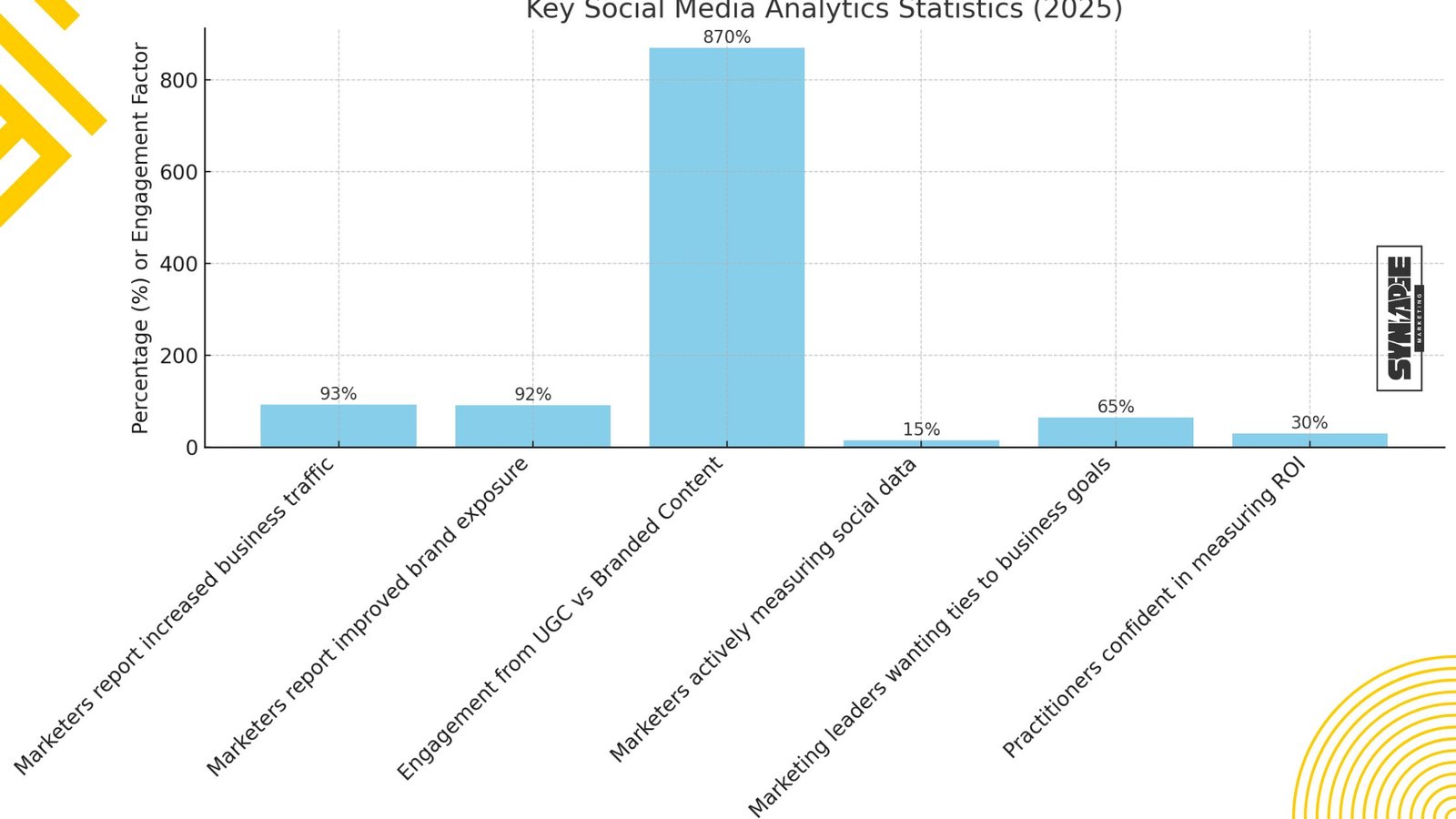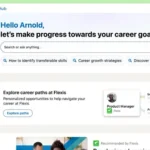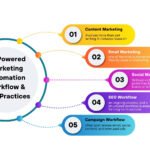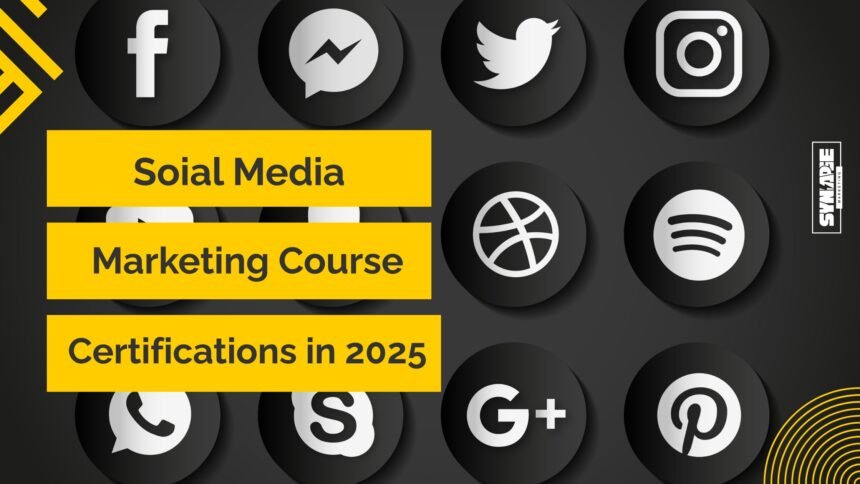I believe in the power of learning and when it comes to a Social Media Marketing Course, the right one can transform your brand’s reach and results. In today’s landscape, over 3.96 billion people engage with social platforms daily—Facebook, YouTube, Instagram, TikTok, LinkedIn, and that sheer volume means your brand must have a presence where your audience already lives.
A Social Media Marketing Course does more than teach posting or scheduling; it equips you to build strategic campaigns, use advanced analytic tools, and connect authentically with users. Consider that 90% of local businesses already include social media in their marketing strategy, and 78% rely on it to drive revenue. I want that kind of impact for your business: measurable growth, improved customer engagement, and ROI.
Through a well-crafted Social Media Marketing Course, you’ll understand platform-specific tactics from Instagram Stories to TikTok trends—allowing you to craft a content strategy that aligns with where your customers spend their time. As revealed in 2025 trends, generative AI and social listening have become central to sharpening content creativity and resonance.
By enrolling in this kind of course, you’re not just learning; you’re arming yourself with skills in social media strategy, influencer engagement, analytics, and content experimentation. This becomes your springboard to lead your brand confidently across social platforms, drive traffic and build community.
What Top Social Media Marketing Courses Cover (Industry Benchmarks)
When I design or evaluate a Social Media Marketing Course, I always benchmark against the smartest programs in the industry — those that teach strategy and strategy-driven execution, not just posting. I want you to feel you’re learning from the frontlines.
Here’s what I consistently see across top-tier training:
- Platform Strategy & Advertising Fundamentals
Courses guide you through the pulse of each platform: Facebook, Instagram, TikTok, LinkedIn, YouTube — helping you craft the right content and tone for each channel. You also learn paid media essentials: precise audience targeting, optimized ads, and real-time bidding tools. - Content & Community Building
You explore short-form mastery, UGC strategies, influencer collaborations, and community engagement. Over 80% of businesses use video, and brands that share user-generated content see up to 20% higher engagement. That’s tangible — and in a course setting, I show you how to replicate it. - Data-Driven Analytics & Tools
If you’re going to invest in a Social Media Marketing Course, you need analytics fluency. You’ll learn to measure impact, spot trends, and adapt content. When done right, social tools help brands turn data into insight — nearly 327% ROI is possible, according to a Forrester study of enterprise usage. - Trends & Emerging Technologies
The best curricula incorporate the future: AI personalization, real-time social listening, immersive content formats, and ethical influencer practices. You stay relevant and competitive. - Hands-On Projects & Certification Prep
What sets a great course apart is the ability to apply what you learn. You’ll work on campaign briefs, plan budgets, run mock ads, and interpret metrics — preparing you for recognized certificates from HubSpot, Meta, or industry institutions.
I design — and recommend — courses that don’t just feed you knowledge; they teach you to apply it meaningfully. That means walking through practical tool use, defining content strategy, working with influencer partnerships, or building community-driven campaigns.
Once you’re asked, “What makes this different?” — you’ll confidently point to modules in influencer strategy, social analytics tools, advertising mechanics, and video content workflows. This structure not only builds your confidence but also equips you to deliver measurable impact — traffic, engagement, and sales.
Data‑Driven Strategy & Social Media Analytics

I’m the kind of analyst who trusts real numbers — and the heart of any great Social Media Marketing Course lies in transforming social media analytics into meaningful strategy. Here’s what I break down for decision-makers and brand experts:
First, it’s crucial to understand just how impactful social media can be. According to 2025 data, 93% of marketers report increased business traffic thanks to social media efforts, and 92% say it improves brand exposure dramatically. That kind of reach isn’t noise — it’s evidence that thoughtful content strategy and social advertising truly move the needle.
Diving deeper, user-generated content can generate 8.7 times more engagement than branded content. In a course module, I teach how to harness social listening tools—technology-improved detection of sentiment, keywords, and trends—so you can seed content that resonates authentically and gains traction.
Speaking of tools, I always emphasize that social media isn’t just about reach—it’s about insight and precision. Only 15% of marketers actively measure social data to evaluate ROI, showing just how underleveraged analytics remain. And even though 65% of marketing leaders want direct ties between social campaigns and business goals, only 30% of practitioners feel confident measuring that ROI. That’s your opportunity: mastering analytics sets you apart.
Your toolkit in this course includes:
- KPIs that matter — clicks, conversions, sentiment shifts, audience growth — not just vanity numbers.
- Social listening strategies, which are now ranked as an organization’s second-highest social media priority, outranked only by direct audience engagement.
- Practical walks through dashboards and ROI formulas—like measuring campaign profit divided by investment, a method that paves the path from social buzz to business outcome.
In my experience, the difference between a social media manager and a growth leader is in how they measure and act on data. If you’re learning through a comprehensive Social Media Marketing Course, you’re not just scheduling posts — you’re transforming impressions into strategy, sentiment into insights, and clicks into conversions.
Course Curriculum Outline: Modules & Topics
I always start by asking: What would I want from a Social Media Marketing Course if I were learning it right now? The answer, to me, is clarity, hands‑on experience, and forward‑looking strategy. Here’s how I’d structure such a course—comprehensive yet actionable, designed to prepare founders, marketing leads, and business owners for real-world impact.
Module 1: Platform Foundations & Emerging Trends
You’ll begin by mastering the landscape: knowing not just what platforms like Instagram, TikTok, LinkedIn, and YouTube offer—but why they matter for your brand. We’ll explore algorithm shifts, short‑form video trends, and how to align messaging with each audience’s expectations. (See “The 19 Best Social Media Strategy Courses in 2025” for how course experts are framing platform-specific strategy.)
Module 2: Audience, Goals & Strategy Planning
Building personas and defining SMART goals is essential. I teach how to align your social efforts with business KPIs, mapping content types—blog posts, Reels, Stories—to each stage of the customer journey. It’s social media marketing strategy without guesswork.
Module 3: Content Creation & Creative Execution
Here, you dive into creating scroll-stopping graphics, ideating TikTok shorts, and weaving in user-generated content and influencer collaborations. A module like this bridges the gap between strategy and engagement—turning ideas into impact.
Module 4: Advertising & Campaign Tactics
This is where paid media meets creativity. I guide learners through budgeting, targeting, A/B testing ads, and optimizing campaigns with the PESO model—balancing paid, earned, shared, and owned media for maximum visibility.
Module 5: Analytics & Data‑Driven Optimization
You’ll move beyond Likes to meaningful insight—with hands-on work in dashboards, social listening, and tools that help set goals and track ROI. As noted in HubSpot and Hootsuite trends, analytics is often the differentiator between posting and influencing.
Module 6: Certification Prep & Capstone Project
Learning is only powerful when you apply it. I conclude with a real-world project—designing a full campaign across multiple platforms, backing it with analytics, and preparing for certifications like those from HubSpot (free, ~5 hours, 8 lessons) or Hootsuite (intermediate level, $199 with a 60-minute, 60-question exam).
Why This Curriculum Works
- Sequential mastery: We start with foundations and build toward strategic execution.
- Real-world skill building: Each module includes tools, frameworks, and live briefs to reinforce learning.
- Certification-ready: You’re not just learning—you’re walking away with recognized credentials and a campaign in hand.
This combination ensures your Social Media Marketing Course is not just another online program—but a path to measurable growth, audience connection, and professional validation.
Certification Options & Credentials in a Social Media Marketing Course
When I guide professionals through choosing a Social Media Marketing Course, the credential at the end often turns a candidate into a trusted expert. Here are the top certification paths I’ve vetted for 2025—each aligns with different learning goals, timeframes, and budgets:
- HubSpot Academy: Social Media Strategy Certification Course
I frequently recommend this because it’s free, self-paced, and covers strategy, content planning, social listening, and ROI measurement. It typically spans just over five hours, featuring videos and quizzes to reinforce learning—earning a credential with no expiration date. - Meta Social Media Marketing Professional Certificate
Offered via Coursera, this six-course program teaches platform-specific tactics across Facebook, Instagram, LinkedIn, YouTube, and TikTok—culminating in a capstone project. After a free 7-day trial, it costs about $59/month, and most participants finish in under five months. - Hootsuite Academy: Social Marketing Certification
Priced at approximately $199, this intermediate-level certification is ideal if you want hands-on training in social listening, content strategy, analytics, and dashboard tools. It culminates in a 60-question exam—pass it, and the certification is yours to keep. - Digital Marketing Institute (DMI): Certified Social Media Specialist
This program pulls from a blend of AI-enhanced strategy, content creation, and analytics. It’s well-regarded in the industry for equipping learners with depth and sophistication. - eCornell: Social Media Marketing Certificate Program
Designed for professionals and entrepreneurs, this three-month immersive program focuses on campaign planning, influencer collaboration, and funnel strategy. It includes a graded capstone and is known for its practical rigor and networking opportunities.
Which Certification Fits Your Goals?
- If you’re after a quick, cost-free credential, start with HubSpot Academy.
- If you want comprehensive, platform-focused training, the Meta Professional Certificate is your best bet.
- Need hands-on analytics and tools experience? Hootsuite delivers.
- Seeking strategic depth and industry recognition? DMI and eCornell offer powerful, academically rigorous options.
Choosing the right certification enhances your social media marketing strategy, signals professionalism, and empowers you to lead campaigns with data-driven precision.
Best Practices & Emerging Trends in a Social Media Marketing Course
I stay laser-focused on what truly moves the needle—and in 2025, any effective Social Media Marketing Course must teach not only how to post—but how to pivot, listen, and lead. Here’s what’s shaping the future:
1. Experimentation Is Your Edge
Creative boundaries matter more than brand consistency. Today, about 60% of social media content aims to entertain, educate, or inform, with half of organizations leaning even more into entertainment-driven posts. Lessons I deliver encourage you to break free from the “perfect post” mindset and creatively test formats—from meme-led carousels to trend-savvy Stories.
2. Social Listening Is a Revenue Driver
Data isn’t just numbers—it’s insight. In 2025, social listening ranks as the second-highest social media priority—just behind direct audience engagement. Over 62% of marketers now use listening tools to shape strategy and inform content. In my modules, I guide you through real‑time keyword tracking, sentiment analysis, and community feedback loops. That’s how you turn chatter into clarity—and campaigns into conversions.
3. Generative AI: The Creative Partner
AI isn’t on the sidelines anymore—it’s part of the team. Nearly 70% of social marketers now view AI as a transformative force, especially for creative workflows. Whether you’re ideating captions, drafting scripts, or tailoring visuals, generative AI tools help you scale creativity while you stay strategic.
4. Smart Platform Tactics & Community Focus
Algorithms are getting smarter—and so should your strategy. It’s no longer about chasing likes; now, shares, saves, and comments carry weight. In beauty and lifestyle sectors, brands are seeing exponential engagement by prioritizing shareable content specifically crafted for Stories, DMs, and Threads. It’s community—not vanity—that wins.
5. Micro-Influencers for Maximum Resonance
Big names still have pull, but micro and nano-creators are driving much stronger engagement. These creators are more relatable, and their authentic content connects deeply. Beauty brands, for example, are investing more in micro-influencers for ROI-rich campaigns.
Why I emphasize these trends:
They build agility, empathy, and performance into your Social Media Marketing Course. You don’t just master scheduling or ad spend. You learn to listen, iterate, and connect—driving creative agility, community trust, and measurable impact.
5 Best Practices & Emerging Trends in a Social Media Marketing Course
I’m always watching what’s next—and in 2025, savvy marketers know a Social Media Marketing Course must deliver more than strategy—it must equip learners to innovate, adapt, and lead. Here’s what I prioritize based on the latest trends:
1. Bold Content Experimentation
Your brand doesn’t have to be buttoned-up. In fact, successful marketers are breaking free of brand rigidity—embracing playful experimentation and authentic storytelling. This kind of creative risk is paying off: in 2025, over 60% of content combines entertainment, education, or inspirational messaging, and social pros who lean into creativity report stronger business outcomes.
2. Social Listening as a Strategic Foundation
Far from a luxury, social listening now powers strategic growth. In 2025, it ranks as the second-highest priority for social teams—right behind active audience engagement. Globally, 62% of marketers view social listening as core to their data toolkit, while 79% consider analytics and listening skills vital for success. Mastering this tool means you can detect trends early, manage crises, and align campaigns with real-time sentiment.
3. Generative AI Is a Creative Ally
AI is no longer experimental, it’s integral. Today, 69% of marketers see AI as transformative for job growth, and most are using generative AI to scale content creation effectively. From drafting reels to scripting ads, AI empowers smarter, faster, and more agile creativity.
4. Micro‑Virality & Intelligent Trendjacking
Going viral is no longer the goal—instead, brands are embracing micro-virality: engaging niche communities with culturally relevant, authentic content. With social listening insights, 31% of marketers now shift content strategy mid-campaign to align with emerging trends.
5. Community-Driven, Humanized Interaction
Algorithms value engagement over polished broadcasts. Social-first brands that listen thoughtfully and show up authentically see significant rewards—achieving up to 10.2% year-on-year revenue growth and outperforming peers by being over 4 times more likely to meet data-driven social goals. Building community connection matters more than campaigning.
Why I Embed These Trends in a Social Media Marketing Course:
Because knowledge isn’t enough—you need agility, empathy, and cultural intelligence. In my course, you don’t just learn marketing—you learn to listen, co-create, and deliver growth that’s smart, sensitive, and culturally resonant.
Hands-On Sample Curriculum: Applying What You Learn
When I map out a Social Media Marketing Course, I center it around real-world application—not just theory. Here’s a 6-week sample framework that blends strategy, creativity, analytics, and emerging tech trends:
| Week | Focus Area | Key Activity |
| 1 | Platform Foundations & Creative Tools | Familiarize yourself with TikTok’s “Creative Catalyst” concept—learning to ideate using tools that shape culture on short-form platforms. |
| 2 | Niche Community Engagement | Identify and engage with niche influencers and micro-communities (like micro-influencers driving 40% of marketing budgets) to build authentic, targeted campaigns |
| 3 | AI-Assisted Content Creation | Experiment with AI-supported tools (e.g., AI avatars, generative ad scripts) like TikTok Symphony to produce creative, scalable ad content |
| 4 | Campaign Execution | Design and launch a micro‑campaign across Instagram Reels or TikTok, focusing on community response, shares, and sentiment tracking. |
| 5 | Analytics & Optimization | Measure results through analytics—monitor engagement, sentiment, and audience growth through dashboards and listening tools. |
| 6 | Capstone Project & Presentation | Present your completed campaign and findings. Reflect on how creative experimentation, community-centric targeting, and AI tools informed performance. |
Why this format works:
- Real-Time Relevance: Incorporates TikTok’s 2025 “What’s Next” insights—Creative Catalysts, micro-community focus, AI tools—to keep you ahead of trends.
- Action-Oriented Learning: Hands-on weeks ensure that you’re building, testing, and refining a campaign, not just planning.
- Strategy Meets Analytics: You learn to balance creative risk-taking with measurement and optimization, turning ideas into impact.
This section is more than instruction—it’s a blueprint for how I guide professionals to transition from learning to leading in the evolving social media landscape.
Conclusion
I’ve guided you through a deeply practical Social Media Marketing Course—from its foundational rationale to curriculum structure, certification choices, emerging trends, and a hands-on campaign roadmap. By now, you’re not just familiar with what to learn—you’re equipped with how to apply and lead.
Here’s your action plan:
- Reflect on your audience: Are you a founder, brand manager, or agency leader? Choose a Social Media Marketing Course that aligns with your role and strategic goals.
- Begin with strategy: Master platform foundations and audience insights. Let data—not guesswork—guide your content, budgeting, and measurement.
- Embrace creative experimentation: Use tools like TikTok’s Creative Catalysts and generative AI to ideate boldly and iterate fast.
- Lean into community: Collaborate with niche influencers and micro-communities. Their resonance and trust often outperforms mass-reach tactics.
- Commit to measurement: Track engagement, optimize performance, and consistently improve. Let analytics be your compass.
By moving from learning to action—backed by strategy, creativity, and insight—you’re on your way to lead social media with confidence and meaningful results.
Reference: TikTok’s “What’s Next” 2025 Trend Report—detailing “Creative Catalysts,” AI-powered ideation, and influencer strategies that reshape the landscape.
Frequently Asked Questions On Social Media Marketing Course
What exactly will I learn in a Social Media Marketing Course?
You’ll gain a comprehensive skill set: from shaping social media strategy and crafting short-form video content, to managing influencer campaigns, measuring analytics, and driving ROI. You’ll shift from content planning to executing results-driven campaigns and earning recognized certifications.
How long does it typically take to see meaningful results after completing the course?
Organic traction often begins within weeks to months, especially when using paid ads. However, measurable growth in traffic and sales usually appears after sustained application—around six months, according to social media strategists.
What formats do courses like Hootsuite’s certification modules follow?
Hootsuite’s self-paced Social Marketing course can be completed in approximately 4 hours. It’s designed for flexible completion, with certification exams that don’t expire.
Is social media marketing difficult for beginners?
Not inherently—it’s more about persistence than complexity. Paid marketing accelerates results, but mastering tools like Google Analytics, content publishing platforms, and social listening takes time. Guided instruction can help you bypass confusion.
Which platforms should I prioritize in my Social Media Marketing Course?
Your focus depends on your audience. TikTok drives cultural relevance—71% of users purchase a brand they first discovered on the platform. Yet, you may start with Instagram, LinkedIn, or others depending on your sector and target demographic.
How is AI integrated into social media marketing today?
AI isn’t a buzzword—it’s a creative partner. TikTok’s 2025 “What’s Next” report highlights tools like Symphony, which offer generative-AI features—from scriptwriting to avatar creation—empowering smarter storytelling.













